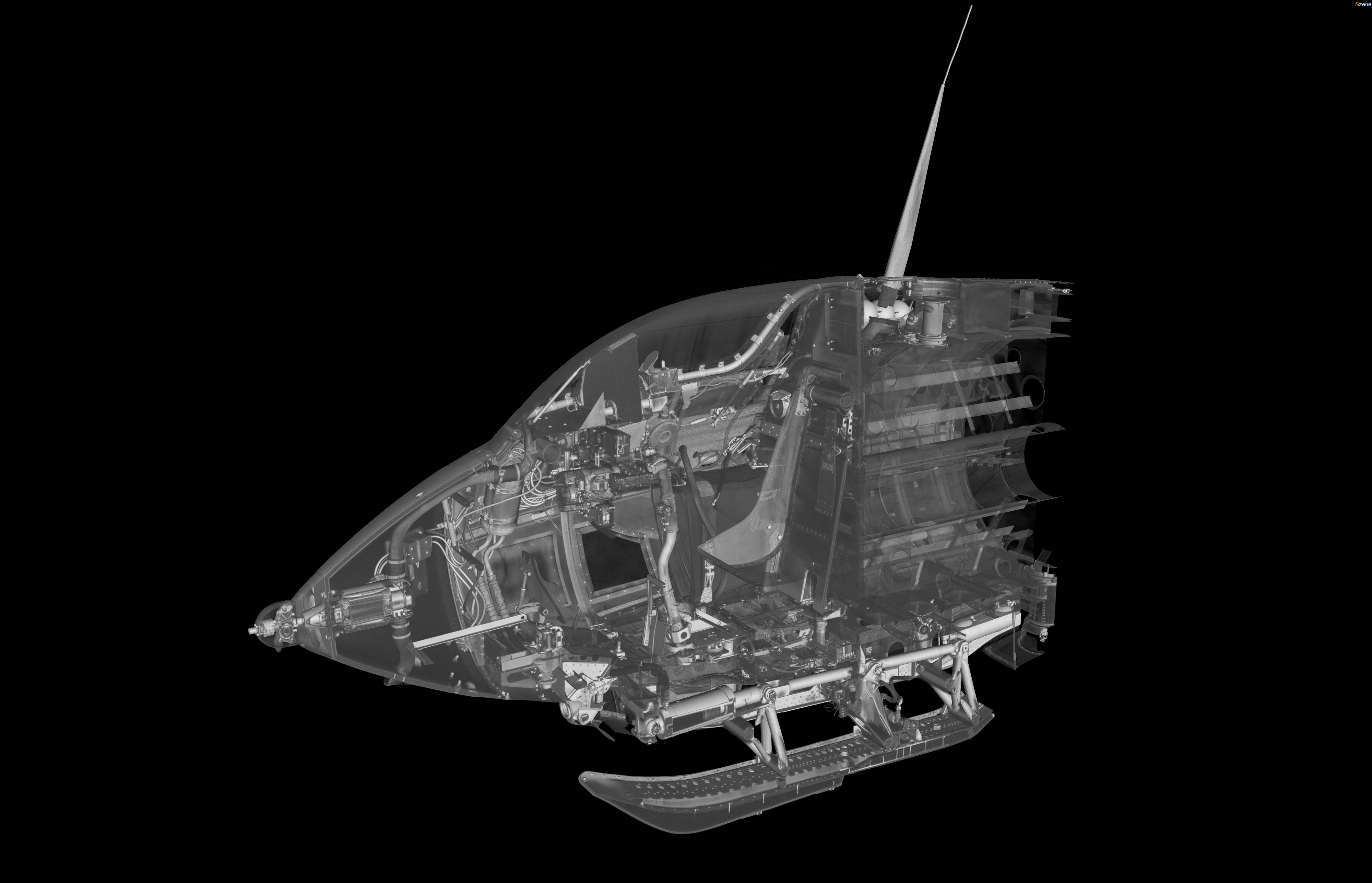Michael Salamon was instrumental in setting up the world’s only XXL computed tomography system at the Fraunhofer Development Center X-ray Technology EZRT in Fürth, a division of the Fraunhofer Institute for Integrated Circuits IIS. He and his team use it to scan large, often spectacular objects and are developing new applications for high-energy computed tomography. #WeKnowHow
Can airplanes get X-rayed?
7.9.2020

Wilhelm Conrad Röntgen would be proud to set foot in the XXL computed tomography hall of the Development Center X-ray Technology EZRT in Fürth. Just a hundred kilometers away from Würzburg, where he discovered X-rays 125 years ago, his heirs have created a facility unlike any other in the world – one they now want to develop further and export worldwide.
Salamon played a major part in planning and realizing the high-energy facility and now leads the work there. Each section of the facility required its own development: from the X-ray source, which is about sixty times stronger than its medical counterpart, to the 400-square-meter hall with concrete walls up to three meters thick.
Here, Salamon and his five-person team scan spectacular objects from all over the world: antique musical instruments, sleek Ferraris or a Messerschmidt ME 163 rocket fighter. “What fascinated me most was when we did the computed tomography of the 1.5-meter-long fossilized skull of a Tyrannosaurus rex,” the 40-year-old engineer says. “We even discovered a bone for which the precise position had not been previously identified.”
What happens to a car during a crash test?
But such spectacular objects tend not to be part of everyday life. Salamon and his colleagues spend most of their time scanning cars that have been driven into a wall in crash tests. CT images let the automakers see how the components’ shapes have changed much more accurately than manually dismantling the vehicles would.
“The potential of X-ray technology is far from exhausted,” Salamon says. He is convinced that this is because many people aren’t willing to accept the technology. In his opinion, companies are also much too hesitant about X-rays – even though there are still many possible applications, especially in production, for example in the automated quality control of components.
The aerospace industry has already recognized the advantages of X-ray technology for quality control. “We’re currently developing special technologies that use high-energy computed tomography to scan things like 3D-printed satellite engine components made of high-strength materials,” Salamon explains. His team wants to achieve a resolution of a tenth of a millimeter.
Why do we need drive-through CT systems for cars?
One project is particularly important to the manager of the high-energy facility: designing a compact drive-through system for scanning cars. His group is currently building a prototype for smaller parts for Technische Universität Kaiserslautern. The next step will be to work with partners to implement the technology for entire vehicles. Salamon sees the growing field of electromobility as an important market: “CT is ideally suited for examining battery damage in accident vehicles. This is something that’s almost impossible with other methods.” He has a clear vision: “More and more automotive test institutes will need drive-through CT systems like this – not only in Europe, but all over the world.”
Article by Christine Broll.

